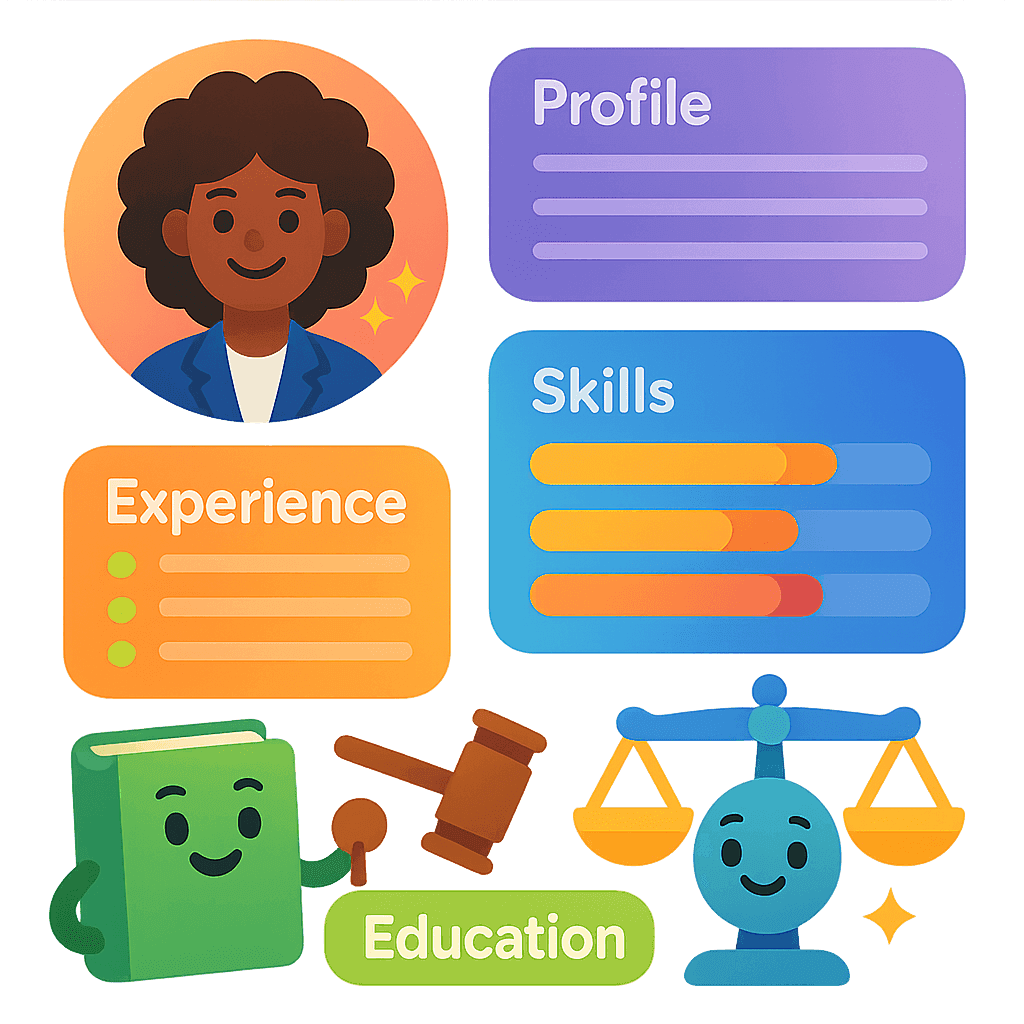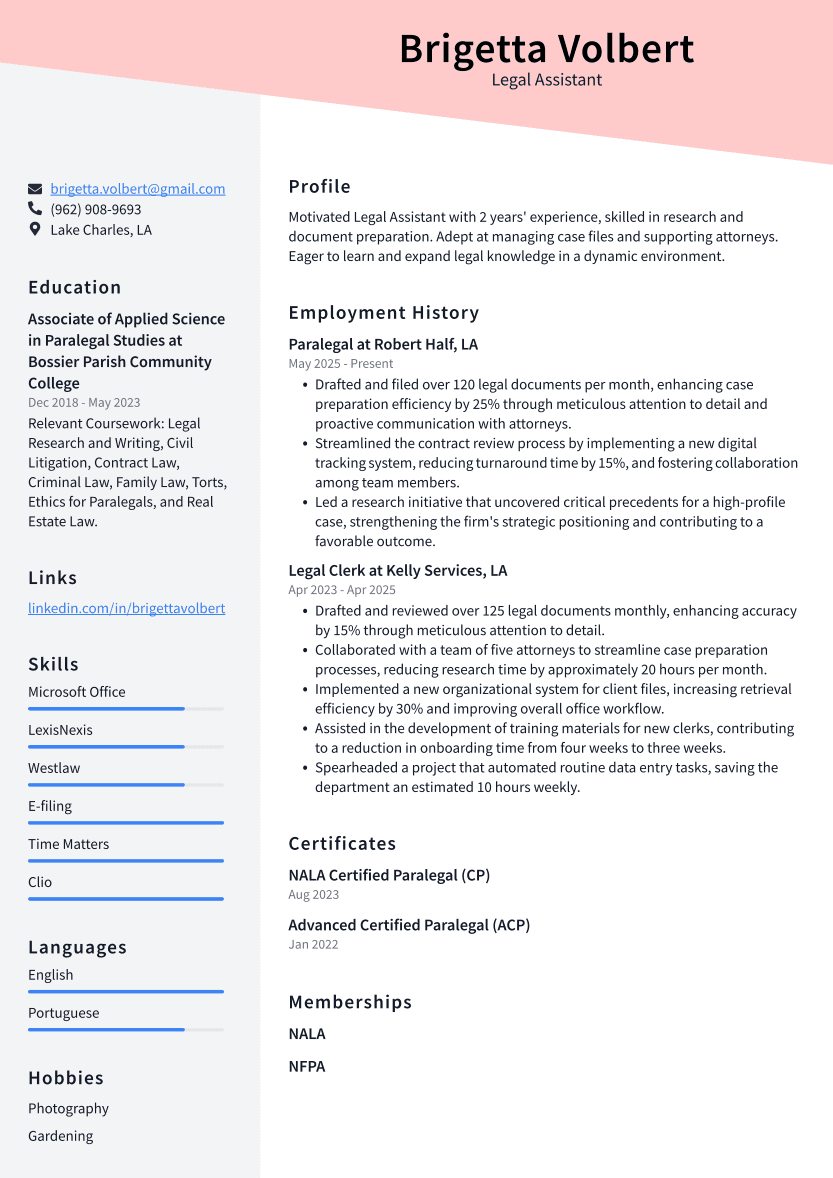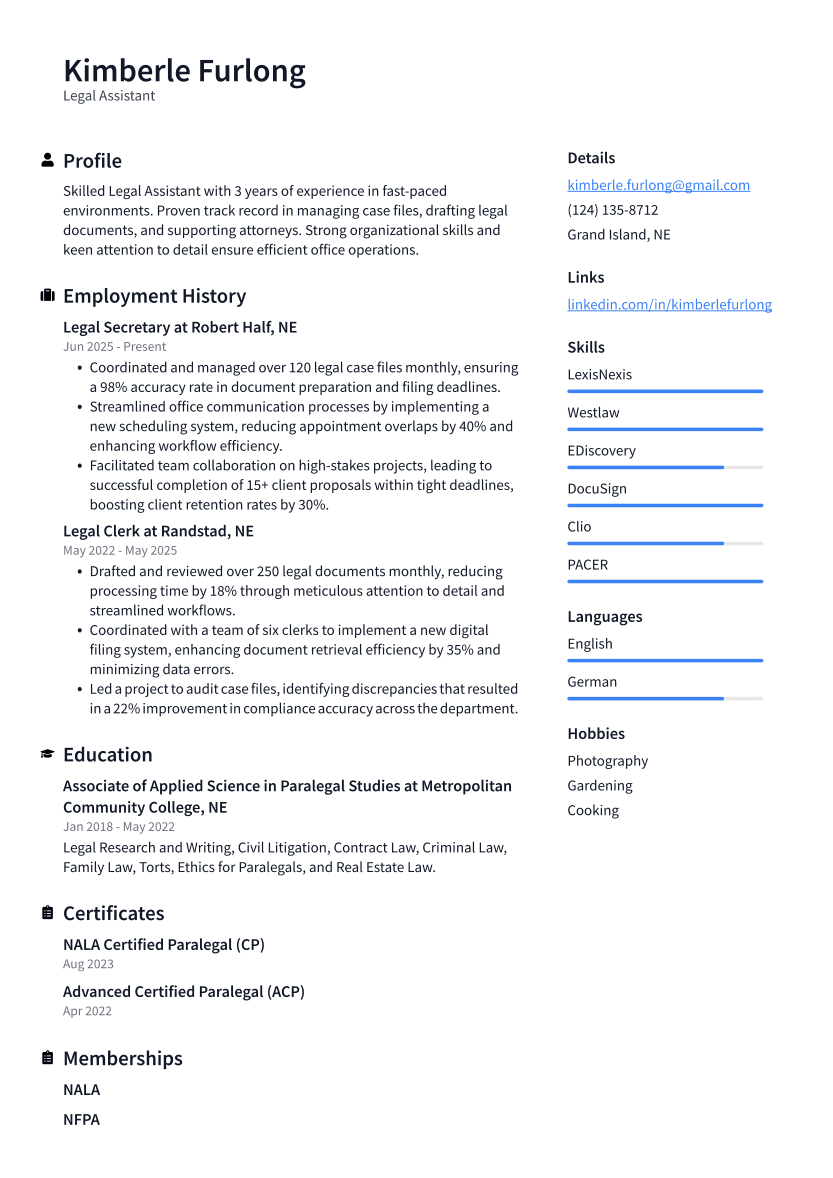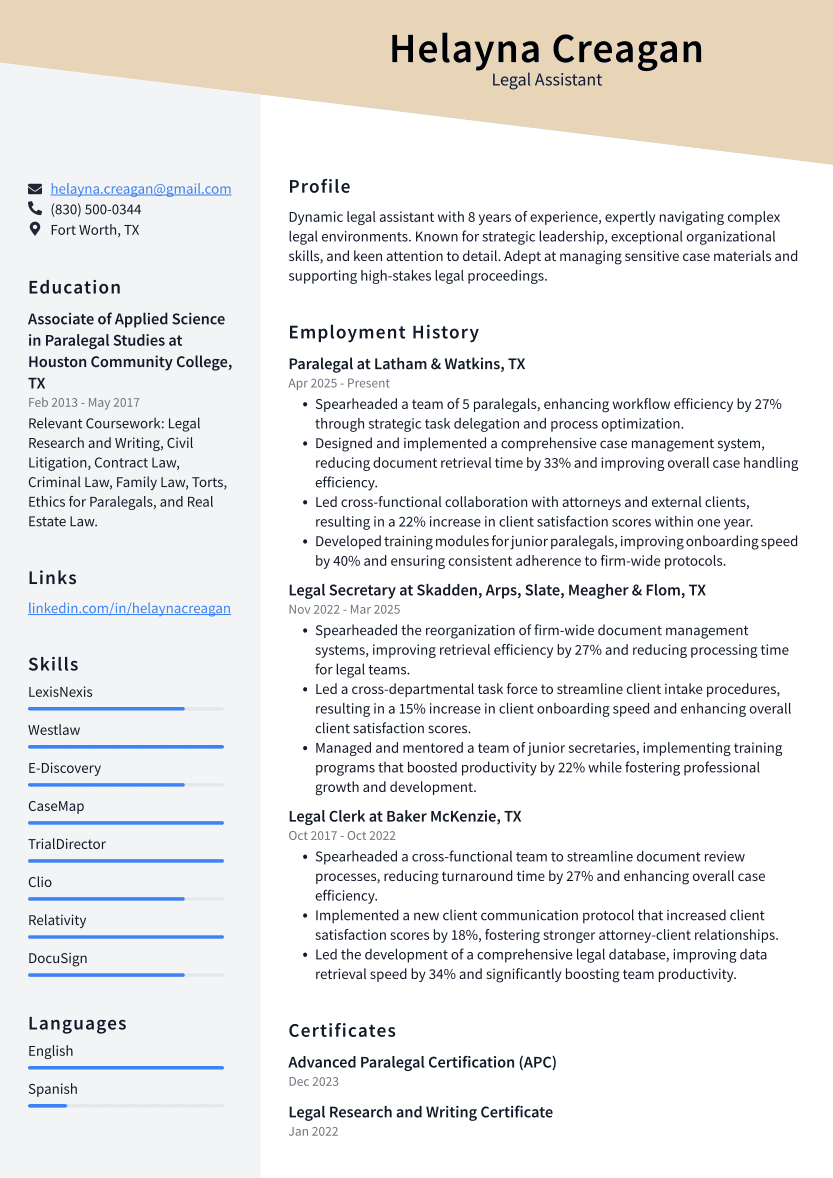Legal Assistant Resume Examples

Crafting an effective resume for a Legal Assistant position is like penning your own closing argument—compelling, concise, and crushingly essential. This article will unveil the secrets of showcasing your skills and experiences, ensuring your resume waltzes confidently to the top of the stack. Readers will learn the vital ingredients to concoct a resume that even Atticus Finch would envy.
What to Include on a Legal Assistant Resume
- Contact Information: How to reach you quickly and easily.
- Summary: Snapshot of your professional identity and goals.
- Work Experience: Your journey and achievements in previous roles.
- Skills: Key abilities that set you apart professionally.
- Education: Your academic background and qualifications.
- Certifications: Additional credentials enhancing your legal expertise.
- Professional Affiliations: Memberships in relevant legal organizations.
- Volunteer Experience: Unpaid roles that showcase your dedication.
- Languages: Additional languages you speak fluently.
To tailor a resume for a Legal Assistant role, emphasize organizational skills by detailing your experience managing legal documents and calendars, and highlight proficiency in legal software like LexisNexis or Westlaw, illustrating how these tools were used to streamline case research.
Pro Tip: Crafting a Legal Assistant resume with precise skills and keywords is crucial for slipping past the ATS gatekeepers, ensuring your application catches the right eyes.
How to Make Your Legal Assistant Resume Stand Out
In your resume, emphasize achievements by detailing specific cases where your organizational skills led to a 30% increase in document processing efficiency. Highlight how your meticulous attention to detail resulted in the successful filing of over 100 legal briefs without errors, showcasing your impact through tangible results.
Opt for a clean, professional font like Garamond or Arial, ensuring text remains legible and formal. Avoid overly decorative fonts that may distract from the content.
Utilize clear section headings with bold or slightly larger text to guide the reader smoothly through the resume, making it easy to find relevant information quickly.
Maintain consistent spacing and margins throughout the document, which helps to create a visually appealing and balanced layout, allowing for easier navigation and comprehension.
Pro Tip: Tailoring your Legal Assistant resume for each job highlights your most relevant skills and makes you stand out to potential employers.
Resume Example 1: Entry-Level Legal Assistant
An entry-level Legal Assistant resume focuses more on academic achievements and potential skills rather than extensive work experience or specialized expertise seen in mid-level or senior resumes.
Resume Example 2: Experienced Legal Assistant
A mid-level Legal Assistant resume highlights specialized skills and some autonomy in handling cases, balancing between learning and taking on responsibilities, unlike the basic experience of entry-level and the leadership roles in senior resumes.
Resume Example 3: Senior/Leadership Legal Assistant
A senior-level Legal Assistant resume showcases extensive experience, specialized expertise, and leadership in managing complex legal tasks and mentoring junior staff, distinguishing it from the more skill-focused or task-oriented resumes of entry or mid-level candidates.
Legal Assistant Resume Do’s, Don’ts, and Checklist
DO'S
- Showcase relevant legal experience by highlighting specific tasks and responsibilities.
- Emphasize organizational and time management skills, crucial for managing legal documents and deadlines.
- Mention proficiency in legal software and tools to demonstrate technological aptitude.
DON'TS
- Avoid using jargon that doesn’t add value.
- Don’t clutter the resume with irrelevant work experiences.
- Steer clear of generic statements that lack specific achievements.
CHECKLIST
- Highlight specific legal software proficiency.
- Emphasize experience with legal documentation.
- Showcase teamwork and collaboration skills.
- Avoid vague descriptions of past roles.
- Do not include irrelevant work history.
- Steer clear of generic language or clichés.






